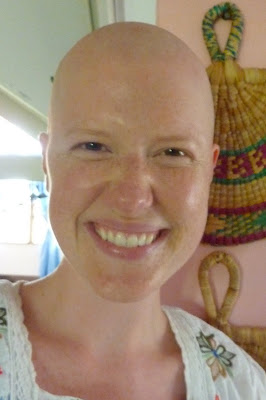 |
| Capturing the Beer-Sheba team |
Well, I have never seen Meryl Streep or Robert Redford grace
the premises of Beer-Sheba, but I have no doubt that Karen Blixen, the woman
who wrote Out of Africa, would have
been in awe working at this particular 225-acre farm in Senegal. What I love
most about a living, functioning farm is the fact that it changes frequently. I
find myself comparing the changes in Beer-Sheba to the developmental
differences I have seen in my little nephew Bennett since he was born. Each
week that I see him, I remark upon something that has recently formed in his
character or his physical appearance. He never stays the same. Beer-Sheba, as I
imagine all dynamic farms to be, transforms from one week to the next.
 |
| Moringa field |
I faithfully continued my weeding in my small section of the
okra field and expanded my weeding efforts to our moringa field. Our okra
plants are growing well, and we think that our first harvest should happen
within the next two weeks. Moringa is considered to be a “miracle tree” because
of their delicious leaves—full of proteins, vitamins C and A, calcium and iron,
to name a few—and they are going to be used for feeding the cattle vegetable
protein and adding to the interns’ and our meals. The second job the team gave
me is to trim the leucaena hedge, which encloses an area of about 18 acres, so
that new growth would occur. I trimmed and used a handsaw to clip every fifth
tree. You wouldn’t believe how long this takes and how menacing leucaena trees
can be because of their gigantic height. I suppose I am thankful that they have
no thorns. I would not have been able to deal with the height and the thorns. I
consoled myself in reveling over God’s goodness and design that he could create
trees adapted to such a harsh climate; however, I am ill adapted to dealing
with these trees and must struggle to win the fight. After about 15 hours of
hacking and felling, I managed to accomplish my task.
 |
| The planted tamarind tree. Can you see it? |
Finally, I enjoyed planting two tamarind trees at the
guesthouse where I am staying in Sandiara. I dug a deep and wide hole, which is
recommended when transplanting trees, and filled it with kitchen scraps,
manure, leaves and natural fertilizer called Gantex ® (a mixture of crushed
peanut shells, seaweed and neem seed) before filling it up with the dirt and
planting the seedling. How satisfying is it to plant a tree and to know that
you are making a long-term and positive mark on the landscape. My mind unveiled
a splendid memory of when I planted a maple tree in pre-school. I remember how
happy I was to plant a tree that measured the same size as I did at the time. I
kept close watch on it to see whether the tree or I was growing more quickly.
Passing me after a rather short while, I continued to enjoy seeing “my tree” in
the backyard, even occasionally caressing it and recalling fondly my special
rapport with the tree. I was so sad when that tree died. I don’t even remember
how it happened. What a blessing to remember our beginning together and the pleasure
it brought to me during its life while forgetting my maple’s demise. I love
that my life has made a cyclical journey back to planting trees, again reaping
immense delight from the activity.
Tip #21 for Surviving in Senegal: When a child asks you for
a present, as they all will, ask them why. They will become a little flustered
and laugh with you, which eases any tension or possible hard feelings. I am not
sure where they learned “White person; give me a present,” but it can become
annoying if you don’t learn how to play with the kids. Senegal is all about
learning how to play with the things that make one uncomfortable.






Comments